With Scottish wildcats now critically endangered, a grant from the European Wildlife Comeback Fund was used to support a pioneering release of captive-bred wildcats in the Cairngorms National Park this summer. This is hopefully the first step towards restoring a viable population of these charismatic and ecologically important animals in Scotland.
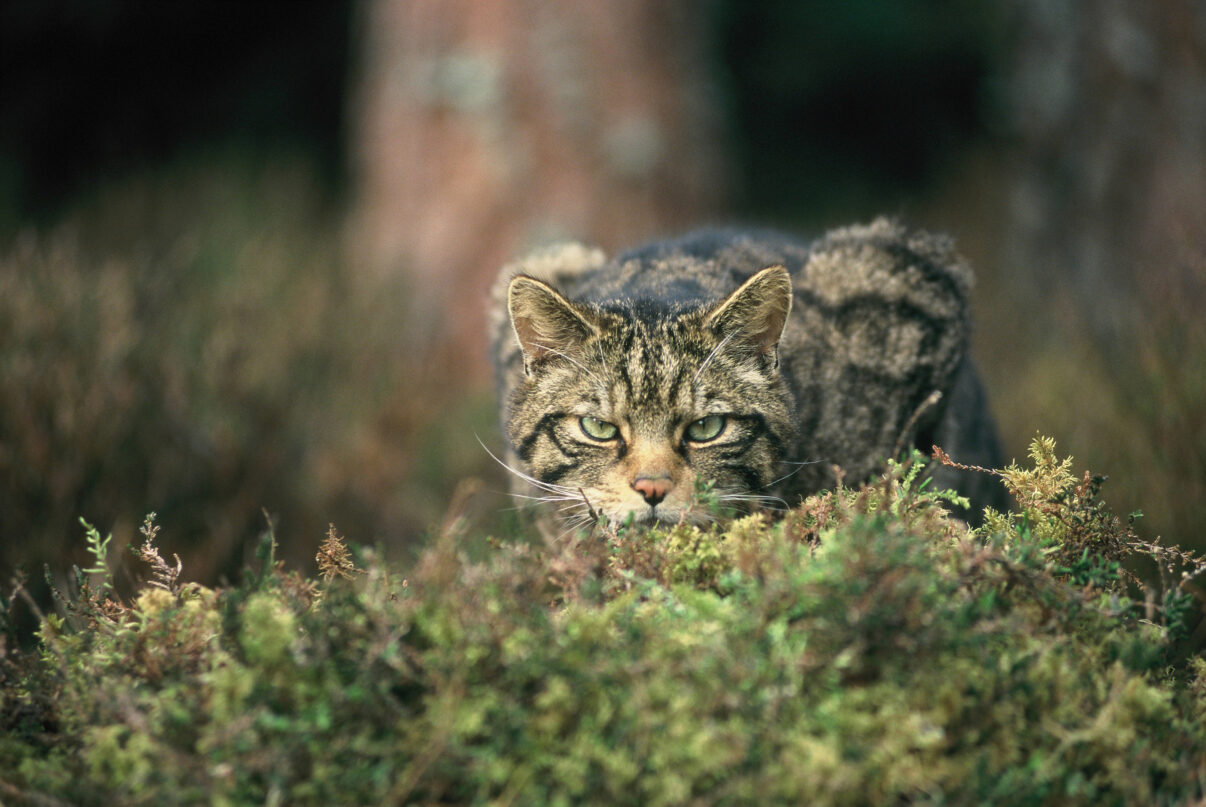
An icon on the brink
Scotland’s wildcats are a unique, iconic and highly threatened sub-population of the European wildcat (Felis silvestris silvestris). The European wildcat was once widely distributed across the United Kingdom, but declined drastically in range and abundance from the turn of the twentieth century onwards due to habitat loss and persecution. It is now limited to northern and eastern Scotland and listed as critically endangered.
The remaining Scottish wildcat population is threatened by hybridisation with domestic cats. Since all individuals sampled in recent years have shown a high degree of such hybridisation, the population is considered functionally extinct in the wild. Unless urgent action is taken now, the United Kingdom’s free-roaming wildcat population will disappear.
“In 2019, a report published by the International Union for Conservation of Nature’s Cat Specialist Group concluded that the Scottish wildcat population was non-viable and on the brink of extinction,” explains Helena Parsons, outreach and engagement manager for the Saving Wildcats recovery project, which is working to save Scottish wildcats and is led by the Royal Zoological Society of Scotland, together with a range of other partners. “It also concluded that the last hope for the Scottish wildcat was to breed captive individuals for release into the wild.”
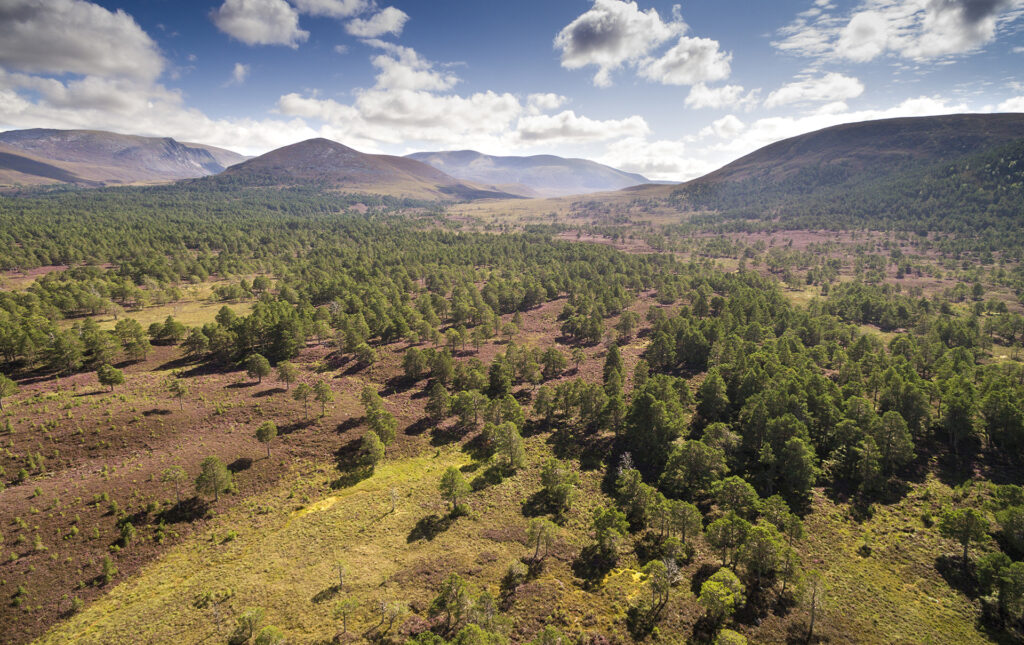
Critical funding
In a step towards securing the future of the Scottish wildcat, a 75,000-euro grant from Rewilding Europe’s European Wildlife Comeback Fund was used to support the release of 19 European wildcats this summer. The offspring of animals sourced from captive holders across the United Kingdom, the cats were raised in a conservation breeding-for-release centre in an off-show area at the Highland Wildlife Park.
The cats were released at secret locations within the Cairngorms Connect landscape of the Cairngorms National Park by the Saving Wildcats partnership. The landscape was extensively surveyed prior to the releases to ensure the restoration of the local wildcat population would be highly unlikely to have a negative impact on the ecology of the area – for example by predating on capercaillie – and that the cats would have enough natural prey to sustain them. Comprehensive stakeholder engagement has generated considerable support for the release, particularly among local communities and landowners.
The European Wildlife Comeback Fund grant was mostly used to build individual soft release enclosures for the wildcats – where the animals spent several days acclimatising to their surroundings before their eventual release into the wild – and to equip them with bespoke, state-of-the-art GPS collars, which cost around 1700 euros each. Every released wildcat has been fitted with a collar, enabling the project field team to track their movement and behaviour and monitor their health.
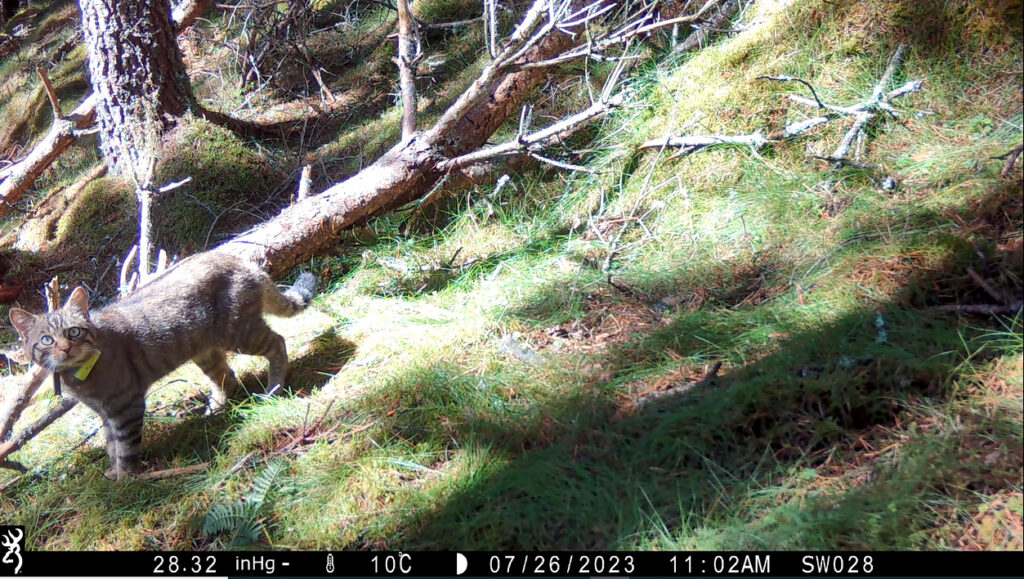
A long-term goal
Approved under licence by NatureScot, this year’s trial releases are the first-ever conservation translocation of wildcats in the United Kingdom. A total of around 60 wildcats will be released over the next three years in an effort to help restore a viable Scottish wildcat population, which will take many releases over a far wider area.
The emblem of the Affric Highlands rewilding landscape is the wildcat. The landscape contains potential areas of habitat suitable for the species, so there may be opportunities to reintroduce wildcats here in the future, although the remit of the Saving Wildcats project only covers the Cairngorms National Park for the next few years.
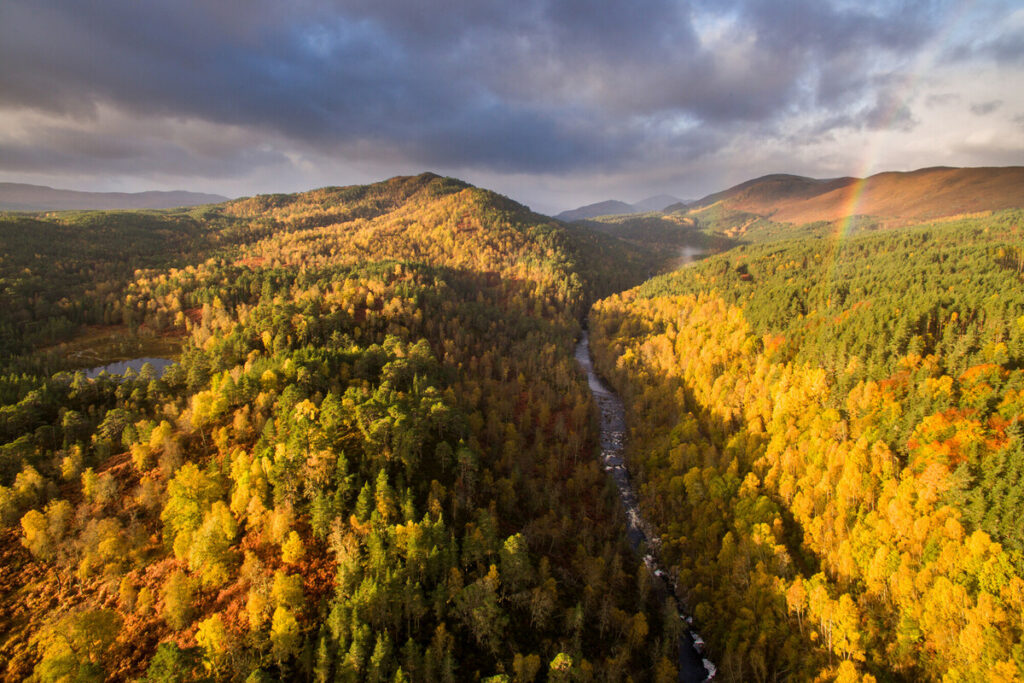
The Scottish wildcat in focus
The Scottish wildcat is a small feline with brown mottled fur and striped markings similar, but not identical, to that of a domestic tabby cat. It has a distinctive thick, blunt tail with a black tip and rings, and is stockier and more muscular than a domestic cat.
Wildcats are an ecologically important species, helping to keep local ecosystems in balance. Skillful hunters, Scottish wildcats mainly feed on rabbits and small rodents such as voles. They are mainly crepuscular (active at dawn and dusk), but may hunt during the day if undisturbed. They are largely solitary, but are more sociable during the mating season, which runs from January to March.
In Scotland, wildcats have historically bred with feral domestic cats, which dilutes wildcat genes and means the distinctive features of the species will eventually be lost. Conservation groups are working to support the Scottish wildcat with a trap, vaccinate, neuter and return (TNVR) scheme focused on feral domestic cats in key wildcat areas.
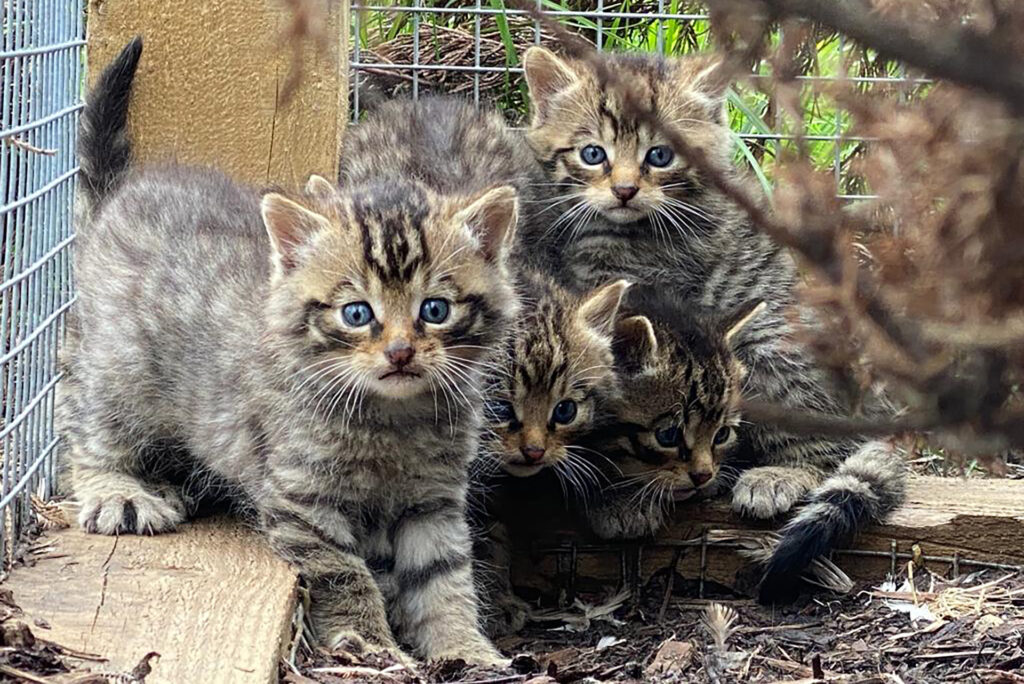
Scaling up European rewilding
The European Wildlife Comeback Fund, which has just celebrated its one-year anniversary, works to scale up keystone species reintroduction and population reinforcement across Europe. Over the course of 2023 the fund is supporting a wide range of wildlife releases, with benefits for nature and people. All reintroductions must follow IUCN guidelines. The fund has already received 2.5 million euros from partners – the aim is to facilitate at least 30 wildlife comeback interventions or initiatives through grant disbursement.
Let’s rewild together
The agile setup of the European Wildlife Comeback Fund is designed to support wildlife comeback in a convenient and flexible way. Rewilding Europe invites other initiatives working to reintroduce keystone species in European landscapes to consider applying for a grant.
“The grant was easy to apply for and the funding came at a perfect time for us as we’d already reached the viability stage for the releases,” says Helena Parsons. “The collars are giving us a phenomenal amount of data, which will really help us work towards our objective of saving the Scottish wildcat.”
Those interested in contributing to wildlife recovery in Europe can support wildlife comeback with an online donation. If you’d like to invest more than 50,000 euros in the European Wildlife Comeback Fund, we’d love to get in touch with you personally.
A diverse partnership
Led by the Royal Zoological Society of Scotland in collaboration with NatureScot, Forestry and Land Scotland (FLS), the Cairngorms National Park Authority (CNPA), Norden’s Ark, and Consejería de Sostenibilidad, Medio Ambiente y Economía Azul de la Junta de Andalucía – and with releases conducted with the support of Cairngorms Connect – Saving Wildcats is supported by the LIFE programme of the European Union.
